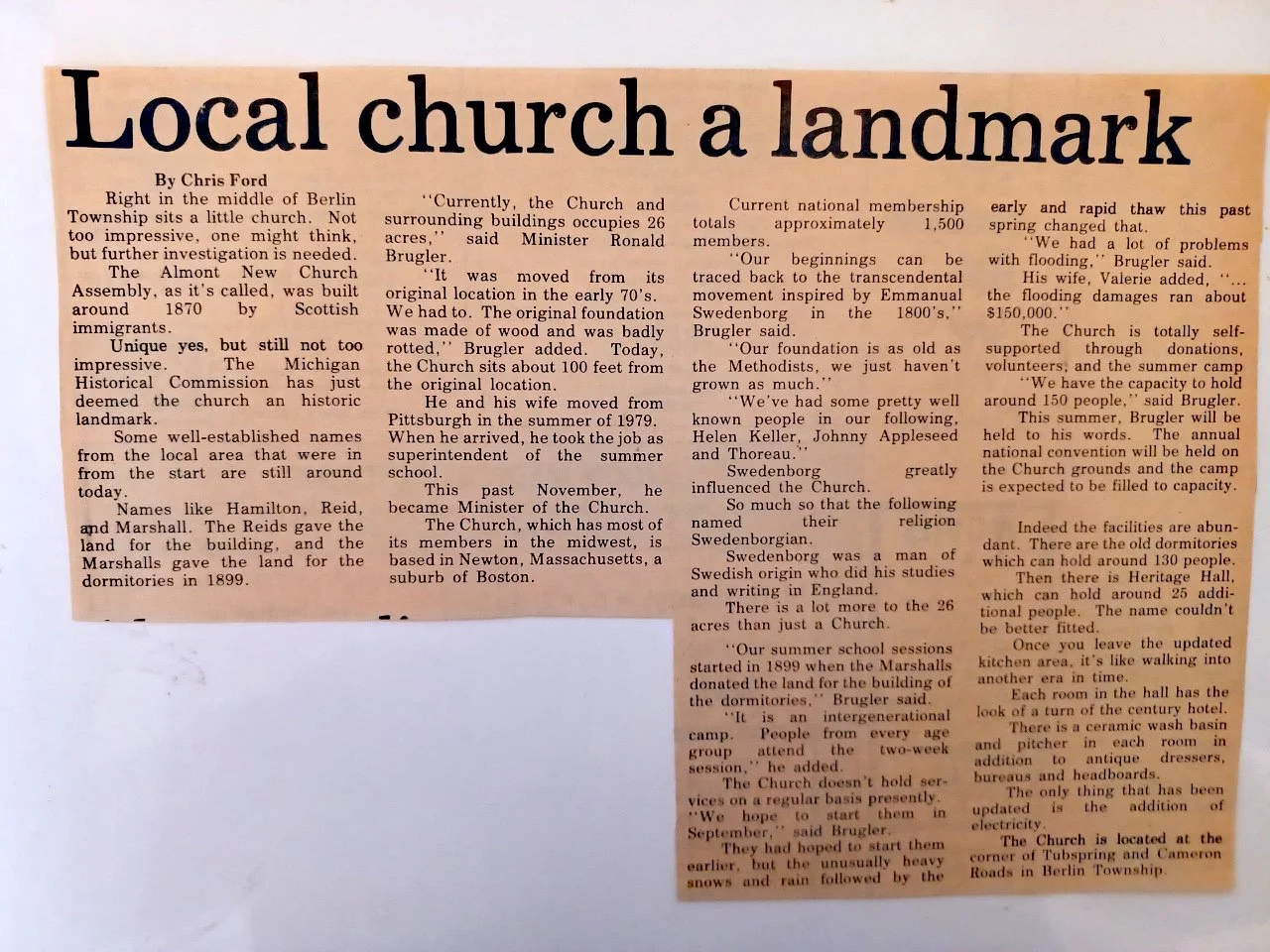
The Swedenborgian Church
Emanuel Swedenborg was a Renaissance man, a polymath, and, to many, an extraordinary spiritual being. He was born in 1688 in Stockholm, Sweden, and he died in London, England in 1772. He had expressly asked that he not be worshipped and that no church be founded in his name.
However, after his death a small group of his followers started what they called The New Church, because, indeed, Swedenborg’s religious insights were revolutionary for his time. A small congregation in London moved to Paisley near Glasgow. From Scotland, members of the New Church went to Berlin, Ontario, Canada, which later became Kitchener, Ontario.
Members also went to Berlin Township in St. Clair County, Michigan in about 1870 where they built the beautiful chapel that still stands. The State of Michigan erected a historical marker to commemorate the community of Swedenborgian Scotsmen.
Only a few individuals created the Swedenborgian community in the Scottish Settlement. We know that the following pioneering families established the community: Hamilton, Allan, Reid, Marshall, Robb, Morton, Robertson and Dodge. There were probably others, but these are the surnames that stand out from history.
In about 1870, the Reid family donated the land upon which the Swedenborgian chapel was built. Hugh and Jenette (Robb) Reid lived in Berlin Township. After Hugh died, Jenette donated the land for the chapel in the family name.
The name Ried changes from census to census and through history, so we see it spelled various ways. In the 1850 and in every census after, Hugh and Jenette’s surname was given as Reed. William and Mary Read lived in Bruce Township. John and Elizabeth Reed lived in Almont Township, and John and Janet Reed lived in Metamora Township. Presumably, this is the same family spread over three counties. Further research is needed to discover the family ties.
Jenette’s surname was Robb, and it is clear that the Reid and Robb families knew each other in Scotland. There are also clues that there were Swedenborgian connections in Ontario. There is much to uncover about the flow of Swedenborg’s followers from London to Glasgow to Ontario to our Scottish settlement in Michigan.
Swedenborg wrote that the Christian bible was not to be taken literally. The bible was mythological and allegorical. Bible stories were parables, lessons from the past, wisdom to be followed. Obviously, he and his followers were chastised for blasphemy by other religious traditions.
Swedenborg went on out-of-body journeys to heaven and to hell. He conversed with angels and demons. He telepathically communicated with alien energy beings. After every journey, he wrote down what he had experienced and published his findings. Doug Baldwin wrote about Swedenborg in the book Swedenborg’s Dilemma, available on Amazon.com.
Swedenborg became a phenomenon among the Romantic poets. He was studied by the American Transcendentalists Emerson, Whitman, and Thoreau. He was also praised by the Lake Poets in England, and he was studied by William Blake, Carl Jung, and Helen Keller, to name but a few of his followers.










